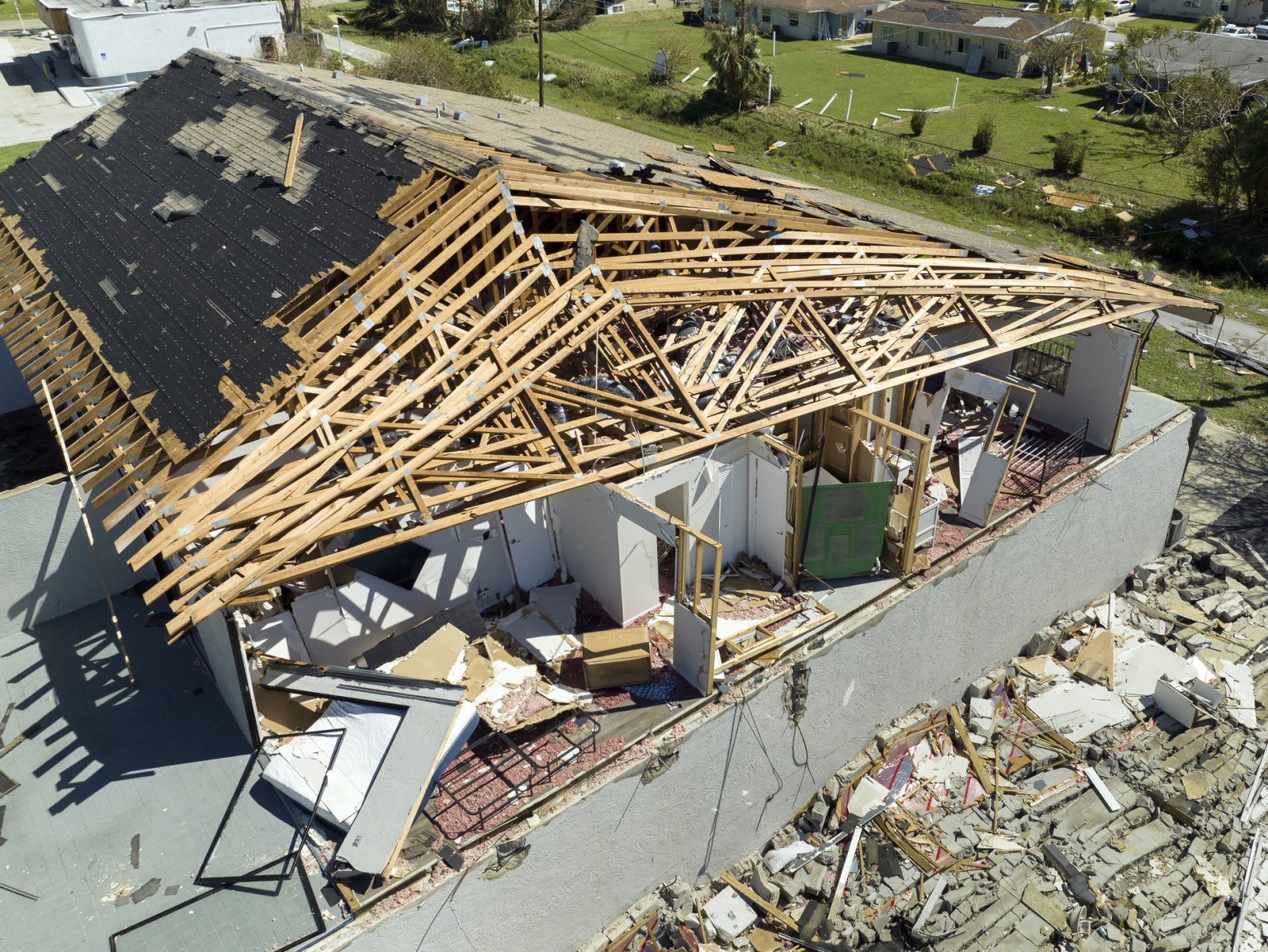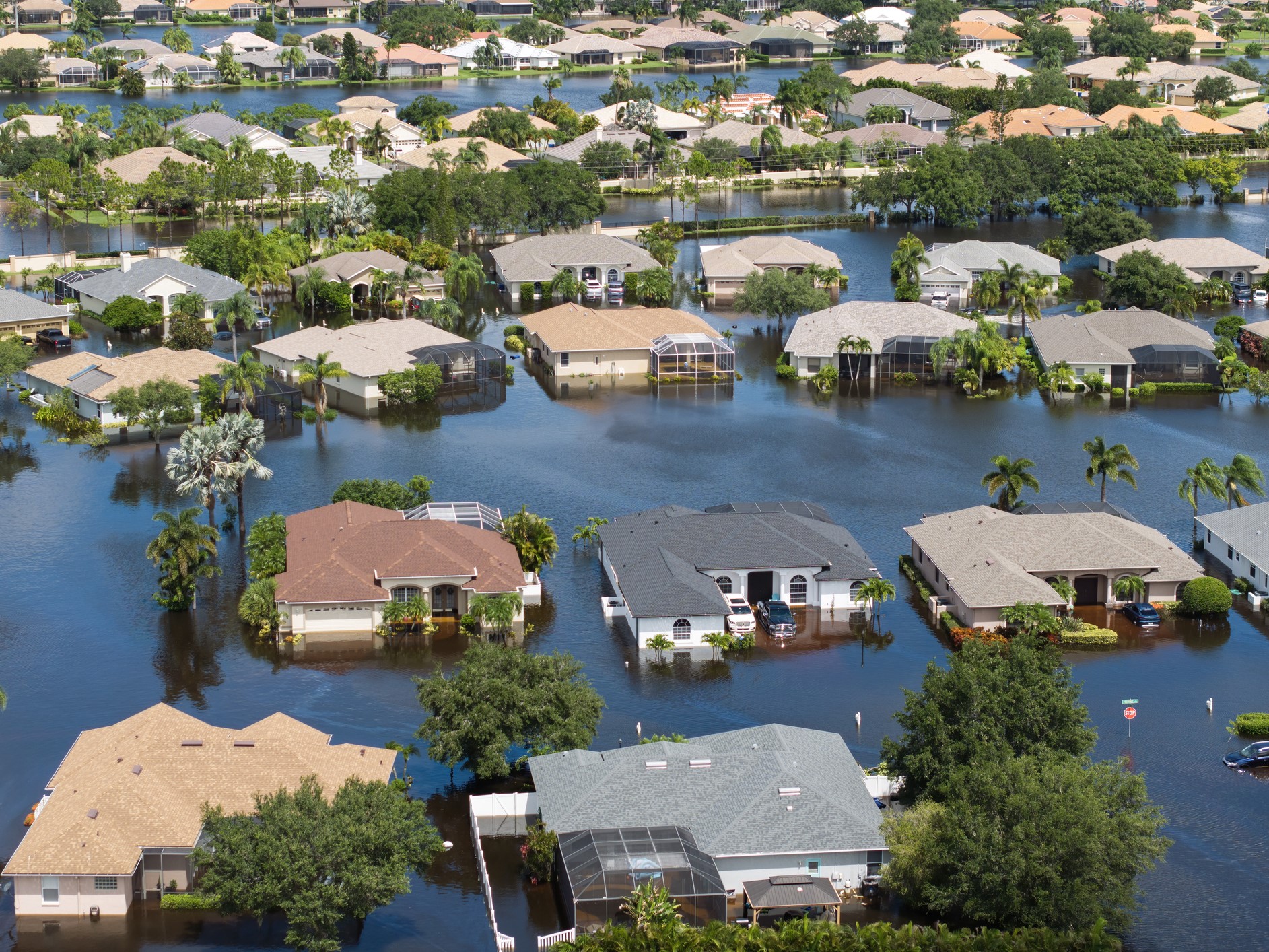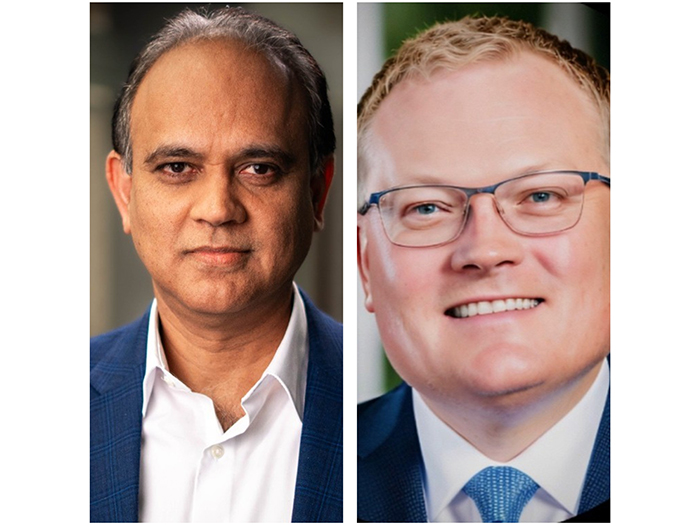6 Questions for The Hartford’s Adrien Robinson
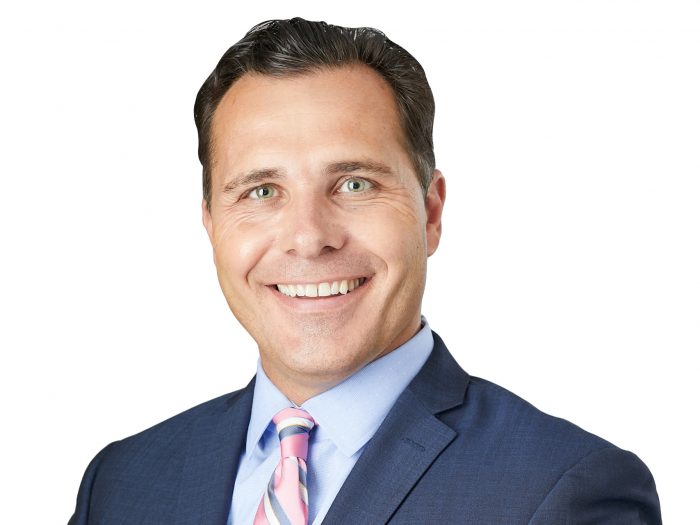
Dislocation and marked premium price increases are common in many insurance markets these days.
To gain better insight on how this upheaval is affecting casualty markets, Risk & Insurance® caught up with Adrien Robinson, head of complex casualty for The Hartford.
Thanks for meeting with us Adrien. For starters, when you use a term like complex casualty, how do you define it?
First of all, we think about what makes a casualty placement complex in the first place. Complexity can simply be viewed as a synonym for higher hazard risk, but it’s really much more than that. In years past, the term was often confined more to what I would call ultra-hazardous, product liability exposures.
So, as an example, think of risks resembling a manufacturer or distributor of trampolines, toys or exercise equipment; perhaps even critical auto parts. And it also includes high-hazard premises-driven exposures. These might include risks similar to amusement parks, school yards and playgrounds.
That’s the historical or traditional definition. However, in today’s marketplace environment there’s a much wider range of risk attributes that can make a placement deemed complex by underwriters.
It starts with risks that present unique loss scenarios or circumstances for which our industry has less data overall to rely on setting rates, or terms and conditions. It also applies to risks with a perceived high verticality or severity of loss. But the very notion of what presents severity in and of itself is changing due to the current social and legal environment. And underpinning that phenomenon I believe is technology, which is a reoccurring theme for me.
The overall size of insured’s operations, just in and of itself; think Fortune 2000, those can also be deemed intrinsically complex given the vast array of diverse exposures.
Consumer goods often present complex liability scenarios, especially products sold to vulnerable populations such as children or the elderly. And then, even something that may be deemed as mundane and seemingly well-understood as automotive exposures. But auto has been such a bane for much of the insurance industry that larger auto fleets or heavier auto exposures can lead to that same complexity.
So, in summary, I would say if a risk intersects even tangentially with one of these areas, or an emerging exposure, that’s what ultimately drives what we think of as complexity.
Technology can also be a tool for mitigating some of this risk, but in the short term, I still think the traditional tools and strategies for risk management are as important now, if not more so, than ever.
You mentioned technology certainly as a risk multiplier and also, hopefully, as a risk mitigation tool. But you also said there are traditional methods that we shouldn’t forget about. What are some of those traditional methods that we should still have in place?
What’s old is still very prevalent, and can also be new in a lot of ways. And I’m talking about traditional principles of sound risk management.
This means an insured should have a good understanding of what their own exposures are. Ideally you’ve got someone in the firm who, as a part of their core responsibility, is managing this risk. They have a very senior seat at the table in the company.
The general principles of sound risk management, understanding your risk and identifying the most effective ways to ideally avoid, or at least mitigate, those risks are still core disciplines. And, understanding what makes your own individual risk more nuanced or complex, that’s important too.
When a risk comes to an insurance underwriter, we’re typically going to have a good general sense of the overall industry and its inherent exposures. We’re probably going to have an idea of what the higher hazard exposures are too. However, what we’d love to have is a real sense that the insured also deeply understands those particular nuances of their exposure and is actively trying to manage them.
Examples might be an understanding of the state that you operate within, and in particular if that state has legal peculiarities such as the labor law in New York; an understanding of those higher hazard exposures; how you’re trying to avoid or mitigate some of those risks; how you’re trying to be cognizant of contractual risk transfer, where that’s available. Those are core risk management disciplines that we should always retain.
Here’s an analogy that could be of useful for someone. As a father of a senior in high school, I liken the insurance submission process to applying to college.
There is a formal application that you complete. And that’s asking for a bunch of typical information. And then there’s the essay. The way to really make yourself stand out, particularly in today’s highly competitive environment for education, is that essay piece.
For colleges, the common application asks for lots of run-of-the-mill information, and it can help differentiate candidates to a moderate degree. But where you really get a chance to shine with recruiters, you have to persuasively tell your story with the essay.
So, the analogy to the insurance submission is, carriers also get an application which details a lot of common dimensions of the risk. I think where an insured really gets a chance to do better in today’s firming marketplace for complex casualty, is how they tell their personal story with supplement materials alongside of the application.
In essence, detail your risk management protocols. However, what’s really compelling is, show us how they’re actually in use. Demonstrate to us some of the results.
If you have an active shooter plan, show us the last time that you actually practiced it. Were there any findings, learnings and were they documented?
Another great example is the use of Telematics, which gets us back into referencing technology, but insureds that have installed these systems, can you produce reports and show us about frequency or severity trends since initial installation.
Identify knowledge or information that you have learned about your own fleet, driver characteristics, and how you’re taking those learnings and trying to reduce overall risk and pivot in a safer direction.
That supplemental piece to your application is a chance where the insured, their agent or broker, can really distinguish themselves and demonstrate that we’re all collectively managing risk together.
This is in many ways a traditional process, but that’s why I mentioned what’s old is kind of new, particularly with the integration of new technologies into conventional risk management practices. I think, in today’s world, particularly as we enter into a more transitional market with firming in many lines, that’s really going to make you stand out, that you’re actively managing and partnering in your own risk.
I don’t think we can talk about casualty risk without talking about social inflation and nuclear verdicts as factors that are amplifying losses. How can we better manage risk given this dynamic in our risk environment?
Technology has changed the very fabric of how we market products and services, how we communicate, and consequently the speed at which large jury awards become notorious. In that kind of climate, one very important thing is to steadfastly manage your reputation. And it’s not just your brand. Obviously, as a company, you’re always trying to manage your brand and your brand really means something.
But I would have an active protocol around reputational improvement and enhancement, and not just post-loss; have a strategy to consistently monitor and improve your reputation with employees, with the public and within your community.
There are many dimensions to this, but this is really important if you become the defendant. We are seeing that jury pools are getting more inclined to award verdicts that are eight figures and beyond, even in relatively benign circumstances.
So, when a Plaintiff demands say $10 million, and members of the jury recently read about an award that was $50 million or maybe even $500 million, well the $10 million demand doesn’t seem all that large or extreme anymore.
That’s where the reputation of your firm can really be an important factor for defendants in litigation. You want to be a sympathetic defendant to the best of your ability.
Part of our generation is very big on social justice and they don’t regret holding large corporate defendants responsible, and often that means through the size of the financial settlements or awards.
In the case where you do find yourself defending yourself in a liability claim, you want to be able to show that your firm has a stellar reputation as a good corporate citizen. I think it’s something to be prescriptive and thoughtful about, and to strive for in today’s legal environment.
So, let’s talk about the insurance market. We see announcements coming out about some markets exiting excess casualty and others imposing stricter limits on what they’ll cover. What’s your view on what’s changing in the casualty markets?
I would say the market overall, across many lines of business, is in a general state of transition. Rates are firming and terms and conditions are tightening. And it’s not just the really high-hazard accounts. We are in a very dislocated marketplace with a lot of capacity being pulled out or being restructured.
I want to bring up technology again as a driving factor. As I said, that’s a theme for me, which leads to a lot of this dynamic around the market that we’re seeing, including social inflation and nuclear verdicts as we previously discussed.
There are multiple lenses through which you can view technology. It has wide-ranging tentacles that are impacting really every aspect of today’s society and business environment. Of course there’s new technology which creates new exposures. That’s a big piece of the equation. These are things like 3D-printing, new chemicals and materials made possible through nanotechnology, the explosion of the internet of things and smart objects.
A light bulb used to be a simple product. Now, it’s not so simple because it can be connected to the worldwide web and be part of a network. And so yes, technology creates new exposures.
A second part of technology though, which also relates to nuclear verdicts, are advances in the medical field. There’s the ability to diagnose new diseases and to treat other ailments and illnesses which we may have been unable to treat all that long ago. On the detection side, if you just think about something like CTE, right? Chronic Traumatic Encephalopathy.
Years ago we would call that “having your bell rung.” Now we actually know that’s a brain injury, and not only do we know it’s a brain injury, technology has enabled us to begin to really diagnose these injuries. And while this is not a new injury, it’s an application of technology that is revealing in greater detail an exposure that we really didn’t know the extent of for a long time.
Another pervasive consequence of technology is the ability of advanced medicine to enable individuals that are critically or traumatically injured in an accident to more fully recover or even survive. Even in cases where, in decades past, they may not have survived. So that’s certainly a beneficial use of technology, but it can also be a very expensive consequence. That particular phenomena manifests into medical costs inflation.
Yet another impact of technology, which I think interweaves with these concepts, is the effect on society itself; the digital revolution and the explosion of social media. It affects the community. It affects prospective jurors, and it affects their perspective on jury awards. The more extreme awards get electronically fired into the digital ether and are propagated throughout society faster than ever.
And certainly, there are other factors to our current marketplace dynamics that I’d like to touch on, beyond simply technology.
One is the robust economy. The U.S. unemployment rate was at 3.5% in September. That’s the lowest since December 1969. Gross Domestic Product grew at roughly 3% in 2018. In 2019, it’s at about two and a half percent.
So, I think a lot of people would say, “Well that increased activity, it’s already reflected in our rating and our exposure basis.” And in many ways it is.
However, I would also make the point that the incremental activity that comes on to the books so to speak is, a lot of times, higher in its riskiness and ability to produce loss. In order to get that type of throughput and output in business, we’re often using older equipment, we’re deploying new workers who may not be able to be trained as fast or may not be experienced as others when the overall workforce was smaller. Sometimes growth like that can just strain a firm and deflect some of the necessary focus away from risk management and into the pressing need to manage growth within the business. These factors can increase overall loss trends.
The last factor that I’ll mention are the prolonged soft market conditions that have existed throughout much of the last decade. Then, add to the equation that 2017 brought record levels of natural catastrophes globally. So, that was part of the story impacting the general insurance marketplace writ large. But, even if you look at a line of business that’s not correlated to natural catastrophes, such as products liability. According to the National Association of Insurance Commissioners, products liability business has been running over a hundred combined ratio, frankly even over 120 combined on average, for more than a decade now. So, you add soft market conditions for such a sustained period; then ’17 has the outsized NAT CATS. You’ve got longer tail lines of business such as products liability that has been well over a hundred combined. Commercial auto as a perpetual capital destroyer. That’s a recipe where something ultimately has to give.
And, if one begins to look at the reserve releases as part of current day earnings for the past few years, they are diminishing over time. The ability to release reserves is slowing.
You can see reserve releases slowing and it makes up a much smaller percentage of current profitability. And so, that brings us to a point where, particularly in the long-tail liability lines, where the insurance industry needs to improve rates or risk balance sheet deterioration.
If you look at all of it; the new technologies, the new exposures, the social inflation, the nuclear verdicts, etc. You put that picture together and you say to yourself, “Yes, where we were at from a pricing standpoint wasn’t sustainable for the long term and there needs to be a correction.”
And I think that’s exactly where we are, we’re in a period of correction and reaction to the many facets of technology on society, both the positive and negative.
Given all of that, let’s talk about the broker-insured relationship and what best practices we should be keeping in mind in that area.
Insurance brokers play a critical and multi-dimensional role in the process. They are, at the lowest denominator, the conduit through which insurance operations and risks are communicated to the carrier. Much more so than that though, they’re often an extension, frankly, of the insurance risk management team. And in some cases, for smaller insureds, they may be the de facto risk manager.
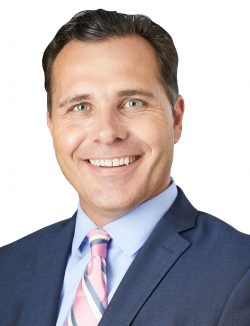
Adrien Robinson, head of complex casualty, The Hartford
They have quite a number of important professional responsibilities. One, brokers and agents can help with the submission process that I previously mentioned. As discussed, there’s the standard application, informational dimensions that we get on almost every insured, but the agent or broker can really help an insured put together risk management protocols and a story that are specific to their business.
They can also assist an insured with the persuasive narrative piece of the submission. And whether that’s done verbally or in writing or packaged up, that sense of care that really shows a carrier that, not only are there meaningful risk management protocols and a plan in place, those tools are not sitting on a shelf somewhere but are actively being put to practical use and have been fully operationalized. I think they can really help convey that.
Additionally, agents and brokers play a critical role in terms of matching insureds and their risks to carriers. Many times they can navigate an insured to specialists, to carriers that specialize in their specific industry. Often, if we’re talking about more complex casualty, there’s something inherently unique or difficult about those exposures.
Brokers and agents help insureds find a carrier with the requisite industry specialization, those that really understand their distinctive exposures. This is one of the most important professional skills of brokers and agents. The pairing of an insured to a specific carrier can even be as nuanced the matching of philosophy of risk in general, how to mitigate risk, or a philosophy around claim handling.
As for complex casualty, the matching process certainly should evaluate the carrier as having an overt specialization in complex risk first, just in general. Which probably means, as a common denominator, specialist underwriters and a dedicated claims unit. In other words, carriers that don’t intermingle the handling of non-complex claims with the same handlers who adjust more complex circumstances.
And then there’s the loss control piece. The successful carrier should have loss control that can connect and partner with an insured to mitigate risk, review contracts and, ideally, all of the folks can speak the vernacular of the insured’s particular industry. I think just in combination and as a partnership, it’s a much better way to manage risk.
Adrien, you’d mentioned technology as a risk amplifier. Was there more you wanted to say about technology as a risk mitigation tool?
Let’s talk briefly about Telematics again, as just one example. I’m a big believer that monitoring driving changes behavior for the better. We have a number of insureds that have adopted this technology, and have been able to demonstrate the proof. They’ll proactively include statistics and graphs in their insurance application that demonstrate improving trends of frequency, or sometimes even with lessened severity. In some cases they can highlight the defense of claim by third party plaintiffs who were actually the at-fault driver.
A second and growing trend that many firms can employ is the integration of software, that when an incident takes place, can track risk events in a data base providing everyone within the company a real-time view of their exposures. This enables learning almost instantaneously across an entire organization, as opposed to having to relearn the same accident over and over again, which is both inefficient and economically painful.
In turn, using software tracking and specifically the collateral data enables a firm to incorporate loss metrics into annual bonus plans and performance scores as an integrated risk management protocol. This is a good example of blending new technology with traditional risk management practices to achieve a better outcome. Using these two tools together, certainly amplify the overall effectiveness over each tool individually, and I believe is an excellent illustration of how tech-enabled risk management practices will be much more powerful in the future. &






